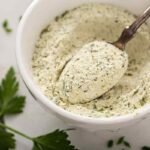Oxtail, more than just a tail piece, is a flavorful, collagen-rich delight that turns soups and stews into heartwarming dishes. Sourced from cattle of both genders, its unique texture and depth have made it a kitchen favorite.
Perfect for slow cooking, its lush marrow and fat yield tender, mouthwatering results. Surprisingly pricey, oxtail’s rise from humble beginnings to culinary star offers a glimpse into food trends and economics.
Curious about how this meat can enhance your next meal? Though I won’t spill all the secrets just yet, rest assured that when it comes to flavor, oxtail stands tall among beef cuts.
Oxtail is the culinary term for the tail of cattle, traditionally coming from oxen but now sourced from cows of either sex. This cut is rich in gelatin, making it ideal for slow-cooked dishes like stews, soups, and braises. The tail is skinned, sectioned into chunks, and known for its bone marrow content. Oxtail requires lengthy cooking to tenderize the tough, fatty meat, transforming it into a succulent, flavor-packed delicacy enjoyed worldwide.
What Is Oxtail?

You may be curious about oxtail, a type of meat that has gained popularity in culinary circles. Oxtail is the tail of a cow and is a bony, gelatin-rich meat. Despite its somewhat intimidating appearance, when cooked properly, it transforms into a tender and extremely flavorful dish.
Traditionally, oxtail was considered a less desirable cut of meat; however, it’s now recognized for its hearty flavor and is often a more expensive cut due to rising demand.
Butchered into sections, oxtail varies in size along the length of the tail. The meat is interspersed with fat and prized bone marrow, contributing to its sought-after taste.
To achieve its best texture and flavor, you’ll find oxtail typically prepared through slow-cooking methods.
These include braising or stewing, which allow the meat to become succulent and fall-off-the-bone tender. The resulting dishes are often rich, with the collagen from the oxtail creating a smooth and thick sauce.
Its use is globally versatile, appearing in everything from traditional Caribbean stews to Italian broths.
You might enjoy it in a comforting bowl of soup or as a robust base for a sauce accompanying pasta. Rich in protein and collagen, oxtail provides both a nourishing meal and a delicious culinary experience.
If you’re new to cooking this type of meat, don’t be intimidated by its unique characteristics. With patience and a slow cooker, you can turn oxtail into a luxurious dish that will impress your palate and your dinner guests.
How Does Oxtail Compare To Other Cuts Of Beef In Flavor And Texture?

When you consider oxtail, you’re looking at a cut of beef that comes from a cow’s tail. This specific section is known for its rich taste and unique texture, which is quite different from other beef cuts such as the rib, loin, or brisket.
- Flavor: Oxtail has a deep, beefy flavor that is more intense than many other cuts. This is due to the oxtail’s abundance of gelatin-rich bones and connective tissue, which, when cooked slowly, imparts a hearty taste and enriches stews and soups.
- Texture: In terms of texture, oxtail stands out because it’s initially rather tough. However, with prolonged cooking, it becomes incredibly tender and falls off the bone, which contrasts with quicker-cooking cuts like sirloin or tenderloin.
- Cooking Time: While steaks or roasts may be served rare to medium, oxtail requires slow cooking. This breaks down the collagen, transforming it into gelatin which provides a succulent mouthfeel.
- Uses in Cooking: You will often find oxtail used in slow-cooked dishes such as braises and stews. The slow cooking method not only tenderizes the tough meat but also allows the full-bodied flavor to permeate the entire dish.
- Nutritional Value: This cut is high in collagen, making it beneficial for joint health. It’s also a good source of protein and iron. However, it can be higher in fat compared to leaner cuts.
In summary, oxtail presents a unique combination of taste and texture that enhances slow-cooked meals with its robust flavor and melt-in-the-mouth tenderness.
If you’re looking for information on the nuanced flavors of oxtail, you might find this detailed flavor guide helpful. For its roles in different dishes, you could check out this comparison of oxtail vs. other cuts of beef.
Health Benefits Of Oxtail

When considering your diet, you may wonder about the healthiness of various meats. Oxtail, the culinary term for a cow’s tail, is a nutritious choice with several benefits to consider. It is packed with protein, an essential building block for muscles, skin, and bones.
This particular cut of meat is also noted for its rich iron content which is crucial for preventing anemia and keeping your blood cells healthy.
- Nutrition: Oxtail offers a range of B vitamins, valuable nutrients that play a vital role in maintaining good health and well-being. For instance, vitamin B12 is critical for nerve tissue health and helps with the formation of red blood cells. Additionally, you’ll find that oxtail provides a good dose of fat, which should be consumed in moderation as part of a balanced diet.
- Collagen and Marrow: Oxtail is known for its beefy flavor and bone marrow, both of which contribute to its health benefits. The high collagen content may help with joint health and skin elasticity. Bone marrow, a type of spongy tissue found in bones, is a source of nutrients such as amino acids, iron, and fatty acids.
- Preparation: The way you prepare oxtail can influence its health benefits. Braising or stewing at low temperatures helps keep the meat tender. When prepared this way, the nutrients are preserved, and the flavors are enhanced.
Keep in mind that while oxtail is nutritious, portions should be appropriate. Regularly including a variety of protein sources in your diet can provide a broader spectrum of nutrients and health benefits.
3 Best Oxtail Recipe Ideas
Oxtail, the culinary name for the tail of cattle, transforms into a succulent dish when cooked properly. Here you’ll find three classic methods to turn this tough meat into a tender, flavorful experience.
Oxtail Soup

Oxtail soup is a hearty and rich dish perfect for cold weather. Begin by browning the oxtail pieces to deepen their flavor.
Simmer them for hours with vegetables like carrots, celery, and onions, along with herbs such as thyme and bay leaves. The slow cooking process extracts the gelatin from the bones, giving the soup a luxurious texture.
Oxtail Steak
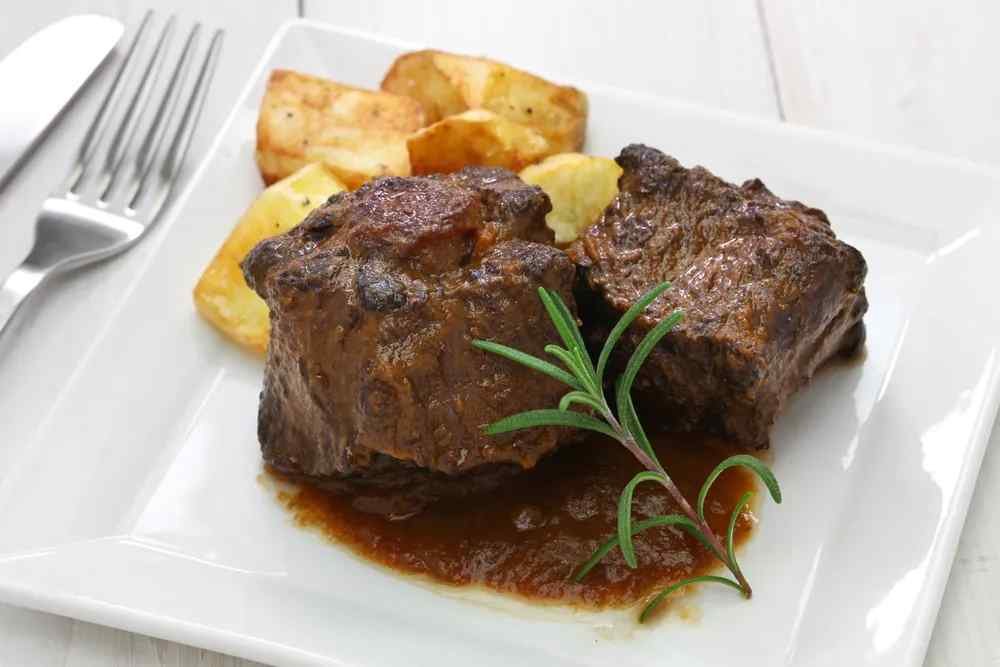
Cooking oxtail as a steak requires a different approach due to the meat’s toughness. It’s best prepared by a slow and low braising method. Start by searing the oxtail to form a crust, locking in juices.
Transfer the seared oxtail to a pot and cover with a mixture of beef broth and wine. Add aromatics like garlic and fresh herbs, then let it cook in the oven for several hours until the meat is tender enough to slide off the bone.
Braised Oxtail
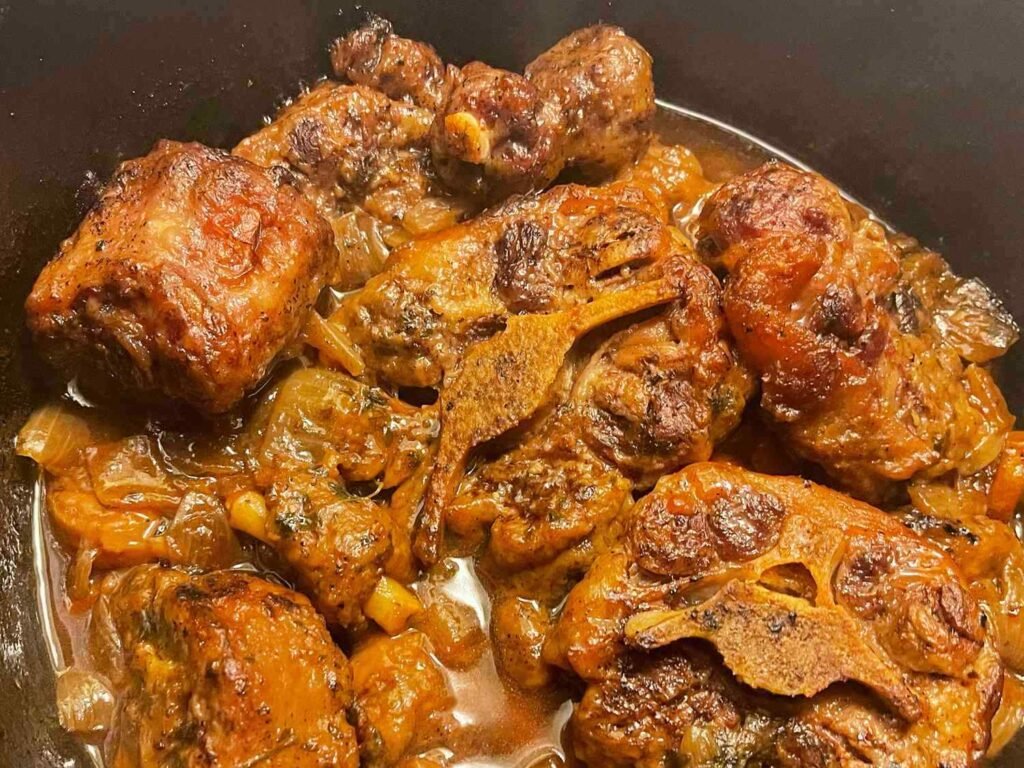
Braised oxtail is a classic that allows the full flavor of the meat to come through. Coat the oxtail in flour and spices before searing to create a flavorful outer layer. After searing, let it braise in a pot with a mixture of beef stock, red wine, and a mirepoix of diced vegetables.
Include tomato paste to thicken the sauce and enrich the dish. It’s often served over a bed of creamy mashed potatoes or rice to absorb the savory sauce.
By experimenting with these oxtail recipes, you can enjoy the full range of what this unique cut has to offer. Whether in a soup, as a steak, or braised, oxtail delivers a satisfying and comforting meal.
Is Oxtail Healthy To Eat?
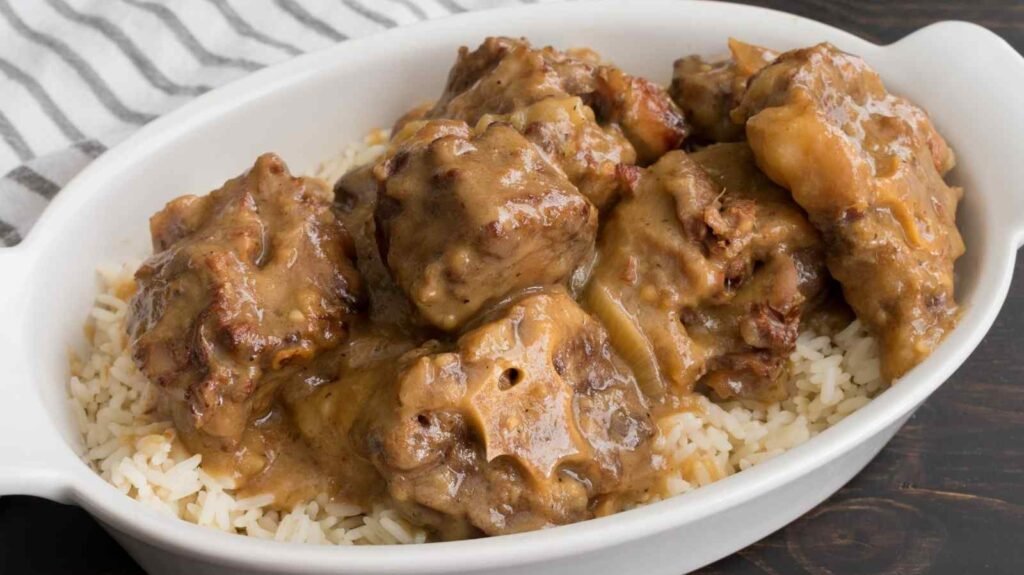
When considering whether oxtail is a healthy meat option, it’s essential to look at its nutritional content. Oxtail is rich in protein and provides a good source of iron and zinc. Your body needs these nutrients for functions like oxygen transport, immune system support, and wound healing.
This specific cut of beef is also noted for its collagen content, beneficial for skin and joint health. Collagen may help improve skin elasticity and reduce joint pain, though more research is needed to fully understand these effects.
Oxtail does contain fat; however, it includes both saturated and unsaturated fats. Watching your portion sizes and preparation methods can ensure that you’re not consuming too much.
Oxtail is often used in slow-cooked dishes, which can help break down the tougher fibers and release nutrients.
Despite the nutritional benefits, it’s important to consider oxtail in the context of a balanced diet. Eating oxtail in moderation can be part of a healthy eating plan, provided it’s prepared without excessive sodium or unhealthy fats.
Dishes featuring oxtail often have a range of ingredients, including vegetables and spices, which contribute to the overall healthiness of the meal.
For more on the protein and collagen content of oxtail, What is Oxtail Meat? provides further insights. Similarly, the health implications regarding fat and overall nutrition of oxtail are discussed at Is Oxtail a Healthy and Nutritious Choice for Your Diet?
It’s clear that oxtail can be a nutritious meat option within a varied diet. Opt for balanced recipes and keep an eye on how it’s cooked to make the most out of its potential health benefits.
Why Is Oxtail So Expensive?
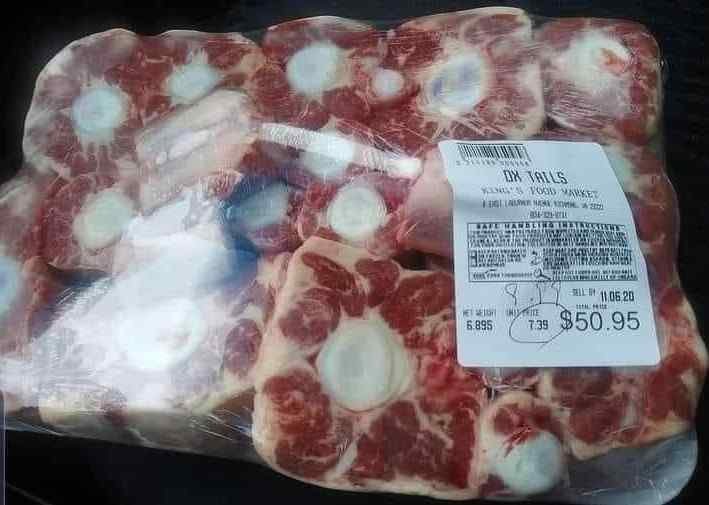
Oxtail is a distinctive kind of meat known for its rich flavor and tender texture after slow cooking. However, you might notice that oxtail commands a higher price than many other meats. The reasons are straightforward yet significant.
- Scarce Supply: Oxtail comes from the tail of a cattle, which means only a small quantity is available from each animal. Considering an entire cow yields hundreds of pounds of meat, the tail portion makes up a minimal percentage.
- Demand Exceeds Supply: While oxtail was once considered a less desirable cut and thus cheaper, its popularity has surged. Unique dishes and flavor profiles have increased the demand, resulting in a price uptick.
- Butchering and Preparation: The process of butchering and preparing oxtail is labor-intensive. The tail must be skinned and cut into sections, which is more time-consuming than processing other cuts.
- Cooking Time: Oxtail recipes often require lengthy cooking times to achieve the desired tenderness. Restaurants factor in the cost of long preparation periods when pricing oxtail dishes.
To better understand the pricing, check the reasons behind the oxtail’s luxury status and explore the price per pound of this coveted meat.
When you plan your next grocery trip or restaurant visit, keep in mind these factors affecting oxtail’s price. It’s a unique cut of meat that, despite the cost, can offer a special dining experience that many find worth the expense.
What Is The Closest Meat To Oxtail?

If you’re searching for an alternative to oxtail for your recipes, you’ll want to select a cut that replicates its rich flavor and tenderness achieved through long, slow cooking. Cuts of beef with connective tissue and marbling are ideal, as they break down similarly to oxtail when braised.
- Beef Shank: This is cut from the leg of the cow and is known for its meaty flavor and texture that is quite similar to oxtail. This cut shines in soups and stews after extended cooking times.
- Beef Neck Bones: Offering a variety of textures in meat and tendon, beef neck bones are a practical stand-in for oxtail and can provide a comparable depth of flavor to dishes.
- Beef Short Ribs: While smaller, they are packed with flavor and have a good amount of meat and fat, making them a suitable substitute in recipes that typically call for oxtail.
Beef Cheeks: Highly regarded for their texture and taste, beef cheeks share the gelatinous quality found in oxtail, becoming exceptionally tender when slow-cooked.
In choosing a replacement for oxtail, you’re aiming for cuts that offer a balance of meat and bone, with enough collagen to ensure the finished dish has the gelatinous quality that oxtail is prized for.
These alternatives, particularly when slow-cooked, will present you with a similar consistency and a rich, hearty flavor reminiscent of traditional oxtail.
How To Store Oxtail Properly

When you’ve got your hands on some high-quality oxtail, storing it properly is key to maintaining its freshness and flavor. Below, find essential tips for keeping oxtail at its best whether you’re planning to cook it soon or save it for a later date.
Refrigeration:
- Short-term: If you’ll be cooking the oxtail within a few days, place it in the refrigerator. Keep it in its original packaging or wrap it tightly in plastic wrap to prevent air from getting in and drying out the meat.
- Duration: Oxtail can generally last in the refrigerator for up to 3-5 days.
Freezing: For longer storage, freezing is your best option.
- Preparation: Before freezing, you can portion the oxtail as needed or freeze whole pieces. Wrap each portion with cling film and then place them in a freezer bag.
- Removing Air: Squeeze out as much air as possible from the freezer bags to prevent freezer burn. Label the bags with the current date so you can keep track of how long they’ve been stored.
- Thawing Process: When you’re ready to cook, transfer the oxtail from the freezer to the refrigerator and allow it to thaw slowly, ideally overnight. Avoid thawing at room temperature to minimize the risk of bacterial growth.
Tips:
- When refrigerated, keep oxtail on the bottom shelf to prevent any possible cross-contamination with other foods.
- Never refreeze oxtail that has already been thawed.
- Use frozen oxtail within 4-6 months for optimal quality.
By following these straightforward steps, you ensure your oxtail remains delicious and safe to eat, preserving its natural taste and texture until you’re ready to prepare that sumptuous dish you’re looking forward to.
Where To Buy Oxtail
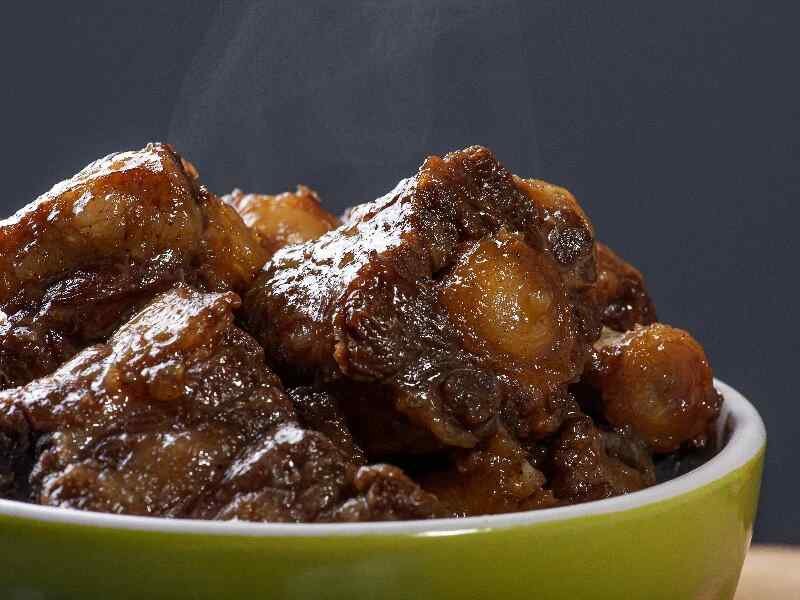
If you’re looking to add oxtail to your next culinary adventure, you’re in luck as it’s widely available at various outlets. When seeking oxtail, your local supermarket might be the first stop. Many supermarkets carry oxtail in the meat section, especially those with a diverse selection of cuts.
Butchers can be an invaluable source for fresh oxtail. They often provide high-quality cuts and may offer more insight into the origin and preparation of the meat. For those dedicated to ethical sourcing, local farmers’ markets are a prime choice to find oxtail from grass-fed cattle with the additional perk of supporting nearby farmers.
Ethnic grocery stores, particularly those specializing in Caribbean, African, or Latin American foods, often stock oxtail, as it is a staple ingredient in many traditional dishes from these regions.
For convenience, consider online meat distributors that offer a variety of meat cuts, including oxtail, and deliver directly to your home. These vendors often have high-quality and sometimes specialized offerings such as grassland beef, which emphasizes sustainably raised meat.
Local Supermarkets – Check the meat section Butcher Shops – Ideal for fresh and high-quality oxtail Farmers’ Markets – Connect with local farmers for ethically sourced meat Ethnic Grocery Stores – Caribbean, African, and Latin American shops Online Retailers – Convenient home delivery
Keep in mind that availability may vary based on your location and the time of year. Don’t hesitate to ask your provider about the source of their oxtail to ensure you purchase a product that aligns with your culinary needs and values.



